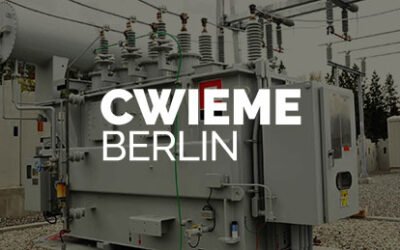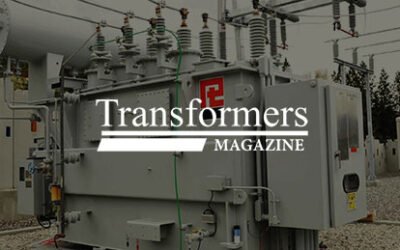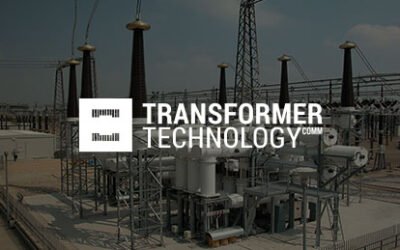Inspection and maintenance of the electric power grid can be a risky, time consuming and sometimes an inaccessible task. With recent advancements in the field of robotics, there’s a move to address this concern, and new designs are being introduced. Robots and drones can minimize human interaction with High Voltage (HV) equipment and make the process of regular maintenance easier. Although robots and drones can assist in all aspects of the power industry, this article focuses on transmission lines.
In 2020, the U.S. Bureau of Labor Statistics continued to list power line installers and repairers in the top 10 most dangerous jobs, with an estimated 20 fatalities per 100,000 workers. In 2018, there were 29 deaths with the most common cause shown to be electrocutions, although falls, fires and explosions, accidents due to confined spaces, and environmental stress were also listed. Through tougher safety measures and health protocols, the fatality rate has decreased, but due to the nature of this industry there will always be danger.
Drones
Drones have been used in this industry for years especially for inspection of transmission lines, pylons and line insulators. An experienced operator can fly the drone close to the equipment and using the high-definition camera on-board, is able to inspect the structure while the lines are still energized. This allows workers to remain on the ground and stay at a safe distance from the HV equipment, while carrying out the inspection and minimizing power disruptions.
Figure 1: Customized drone for inspection of transmission lines, pylons and line insulators.
Companies using drones to conduct power line inspections can be found in all over the world. But in recent years because of pricing and availability drones are being deployed in a rather widespread manner. In China. DJI, one of the largest suppliers of drones, worked with Zhaotong Power Supply Bureau, for power line inspections. DJI estimates that inspections were carried out, even in the most difficult of terrains while increasing their efficiency about 10 times (DJI, 2017). These drones had a built-in system to withstand electromagnetic interference allowing it to operate reliably around HV lines and provided high-definition pictures and thermal imaging of the equipment in real time, so the operator could access the health of insulators and devise steps before a major line failure.
Another power company, China Power Grid, with a network stretching over 11,000 km, has been using aerial operations for years. Initially using helicopters for inspections, they moved to drones for their reduced cost and ease of operation. Drones equipped with Light Detection and Ranging (LiDAR) can generate accurate 3D information.
Figure 2: Drone adopted by Zhaotong Power Supply Bureau to conduct power line inspections
This video is a property of DJI (Da-Jiang Innovations)
In 2018, a new application for drones in the transmission network was observed in the United States, where the company SkySkopes used a Sharper Shape drone for a transmission line stringing operation. Sock pulling, the act of flying a strong and lightweight rope and attaching it to the towers, is typically performed via helicopters or by workers climbing the towers. The unmanned aircraft system method not only reduces the risk for helicopter pilots and ground crew, but also reduces the overall cost of the operation.
Transmission Line Inspection
In addition to aerial drones, specialized robots can be used for transmission line inspection. One of the early designs was the Expliner Robot (Figure 3) (DigInfo.tv, 2010). Developed in Japan by HiBot and electric power company Kepco, the Expliner can traverse live wires working with voltages up to 750kV. It has a built-in capability to manipulate its center of gravity (COG) allowing it to move around obstacles on the wire, such as insulators and clamps. The cameras, in addition to the GPS transmitter, allow the robot to continuously record a 360-degree view of the line as well as share the coordinate information. This robot can easily check voltages, vegetation encroachment and line integrity. Hitachi High-Tech acquired the distribution rights of the Expliner in 2014. A few other examples of similar robots being developed are the LineRanger developed by Hydro-Quebec and the Ti developed by EPRI.

Figure 3: Expliner robot traversing live wires.
This image is a property of HiBot
Looking Ahead
As the world’s power grid infrastructure continues to age, and as people start living in all types of terrain, it will be necessary to increase inspections, not only checking lines for integrity but also for vegetation encroachment. Much of this maintenance is conducted manually, which has been time consuming and inefficient (i.e. expensive) and can be dangerous. With the advancements in the fields of technology and robotics, new avenues have opened for the deployment of robots in the power sector, and we may be able to turn one of the most dangerous jobs into a much safer – robot assisted profession.
More about our Power Grid Market Research
Recent Insights
Medium Voltage Switchgear Supply and Demand
In the article, the authors, Saqib Saeed, CPO & Abdullah Kamran, Analyst at PTR Inc. elucidates that medium voltage (MV) switchgear, operating between 1 kV and 42 kV, is essential for controlling, protecting, and isolating electrical equipment. Valued at...
Europe’s Distribution Transformer Market: Adapting to the Impact of Energy Transition
The article authored b Eyman Ikhlaq, Analyst at PTR Inc. highlights that the European distribution transformer market is poised for substantial growth, driven by Europe's commitment to decarbonization, the integration of renewable energy sources, and the increasing...
Europe’s Renewable Revolution
Azhar Fayaz, Senior Analyst at PTR, emphasizes in his article that global initiatives like COP 28 have heightened the urgency for decarbonizing energy systems, positioning Europe at the forefront of the renewable energy transition. The continent's ambitious plan aims...
Ensuring Grid Reliability: Integrating Digital HV Switchgear and Artificial Intelligence
The article by Saifa Khalid, Senior Analyst, and Saad Habib, Analyst at PTR Inc., highlights the evolution of the U.S. high-voltage (HV) switchgear market, driven by advancements in smart grid technology, renewable energy deployment, and the increasing adoption of...
Contact Sales:
Hassan Zaheer – Exec. Director Client Relations & Advisory
+49-89-12250950



